Workshop Guide to Decal Application
By Steve Cooper, VJMC Editor
Sometimes in the perverse pursuit of classic motorcycle ownership there comes a need to replace decals, logos, stickers or emblems. This month we show you how to apply decals without the whole exercise turning into a vinyl nightmare.
Some decals are held captive under a top coat of lacquer whilst others are applied over the final coat of paint. The former will normally require a full respray and fresh graphics to refresh the bike’s appearance but the latter can, normally be easily removed. Taking the obvious precautions gentle heating with a hair drier is normally enough to remove even the most tenaciously adhered sticker.
Any residual adhesive can normally be removed with a clean cloth and a little carburettor cleaner solvent or similar but please remember to turn off and remove the hair dryer. Also check for any paint/solvent interactions before dabbing solvent on that prized panel. Ideally it’s easier to work with a panel off the bike and the target surface horizontal so always plan ahead accordingly to ensure the paintwork is protected.
If applying new stick-on graphics to paintwork prior to lacquering ask your supplier what materials are compatible with the new vinyl decals you are about to apply. Getting this correct will prevent solvent/adhesive/plastic compatibility issues and the subsequent horror of bubbling decals. It’s now possible to buy one part petrol resistant lacquers from places like Halfords so if you intend to use similar it’s possible to check for compatibility issues yourself; ask your decal supplier for an off-cut.
Even if you won’t be lacquering over the decals post fixing it’s worth making sure any new paint is fully cured and/or crossed linked. A surprising amount of new paintwork remains softer than you might expect for a considerable time post spraying. Some pressure sensitive adhesives (PSA) seem to react with this almost- cured paint so it’s better to be safe than sorry. As a general rule you shouldn’t experience issues with front line suppliers but if in doubt ask before you make a potentially expensive mistake. Here I’m working on a small petrol tank cover of a step through but the techniques used are the same from moped through to Superbike.
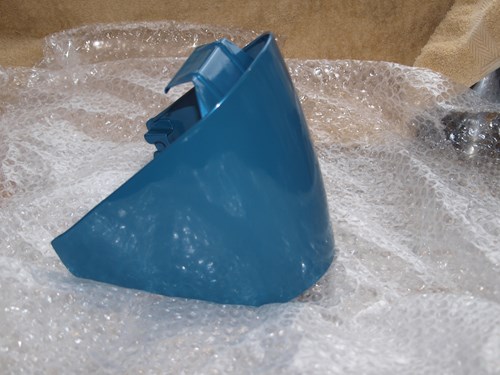
From the decals I’ve applied in the past I’ve learnt there are a number of vital elements necessary before attempting to fix decals in place; time, clean panels, good light, patience and (where possible) a second pair of hands. This is not a job that can be rushed and you can’t really walk away from it halfway through so don’t start any one panel unless you know you can finish it.
A clean substrate is imperative; wash old paintwork thoroughly and carefully wipe it over with methylated spirits or similar to ensure there’s no grease or polish to impede adhesion. This is a task that requires good light because you’re looking for accurate placement of the decals and just as importantly need to be able to see any creases, wrinkles or bubbles. For this reason I prefer to work in natural daylight and not use electric lighting.
Next is an obvious but easily overlooked commodity, patience. Don’t expect to be able to decal-up a difficult tank like a Yamaha XS650B first time out as it’ll probably end in tears. Start off with an essentially two dimensional item such as a flat side panel and learn your craft there before attempting something too challenging; under the wrong circumstances it’s amazing just how innately hostile a floppy piece of self adhesive vinyl can be.
Finally a second pair of hands can prove to be very useful especially when it comes to large complex decals that need to be laid out over complex shapes. Positioning the decals is key to the final appearance of the panel. Ideally you should be taking measurements from the old decal or panel and transferring (sic) these over. If the bike didn’t have the panels or decals when you got it check similar machines for datum points.
The web is also a good place to look and it’s easy to print off a picture and scale it up. However, perhaps it’s worth adding a word of warning regarding using sales brochures as points of reference. Many brochures are generic and cover more than one country; similarly the bikes featured may well be prototypes or pre-sales version so just make sure you know what you’re looking at before plunging in.
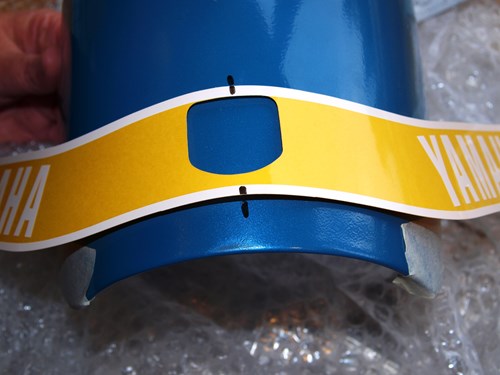
Here I’ve marked the centre line of the panel and the outer face of the decal with a dry wipe marker. This gives me a datum point from which to work and is easily removed later; I avoid permanent markers for obvious reasons. The yellow of the decal is the backing or release paper and it’s this that the PSA (pressure sensitive adhesive) is temporarily attached to. To ensure the decal runs parallel or as close as possible to the panel’s edge also I’ve added some masking tape which will act as a second datum point.
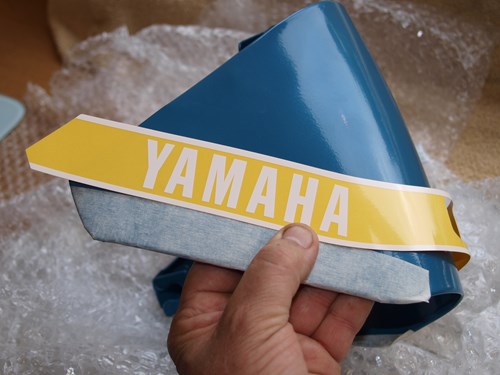
It’s all to easy to get hung up on a millimetre left or right, up or down but in practice it’s not generally that critical. As a rough rule of thumb if the decals look like they are in the correct place in terms of both aesthetics and body lines they generally are.
The original manufacturers were knocking these bikes out by the thousands and didn’t have the time or inclination to obsess to the nth degree. When fitted you will also notice that genuine factory decals may well over hang a panel slightly. This would appear to allow for a small degree of latitude in positioning and make the shop floor staff’s life easier. Follow their lead and look at the overall picture.
The next stage of decal application is, to begin with, overtly perverse but remains fundamentally pivotal to the whole exercise. In order to fix the decals in place we need to ensure they don’t stick down at all, at least initially. The aim is to float the vinyl onto the surface without the PSA making permanent and direct contact with the substrate. By taking this approach some fairly serious repositioning can be undertaken before the final jiggery- pokery is undertaken. Using just one spot of liquid hand soap in a cup of water provides sufficient lubrication for the task in hand.
Water alone will help prevent the decal from sticking but the addition of the soap means the water spreads out uniformly on the panel’s surface. One of the most nerve wracking parts of the process is removing the decal from its protective backing. Many original and aftermarket decals come with a purpose made cut that allows you to bend the item and lift a corner of the protective backing away from the adhesive. Small decals can be simply sprung of their backing.
If your decal doesn’t have any obvious way of liberating it from its protector try gently applying a sharp craft knife to the back of the protector or mount and just break the surface; this should give you an edge you can work from. You may find it’s easier to initially remove only some of the protective backing; it makes decal application easier and less fraught with disaster. Resting the panel on some clean bubble warp to cushion it and couple of old towels to soak up any water I may slosh about the panel is covered in the clean soapy water. It doesn’t matter how much is poured on, you can’t have too much and the amount that will stay on the panel is self governing.
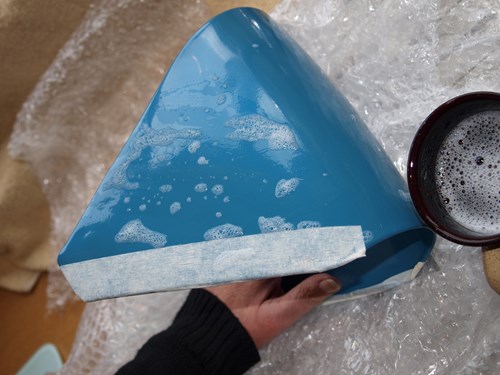
I take one more siting of the intended location of the decal and see how this lines up. Working from my datum points and masking tape
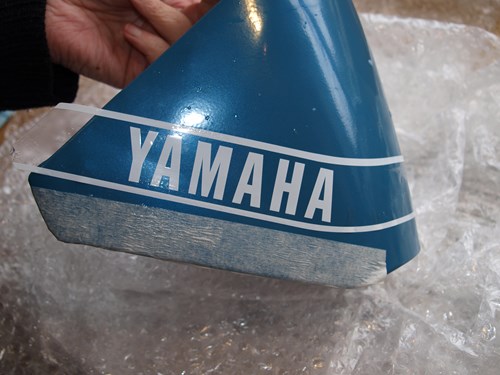
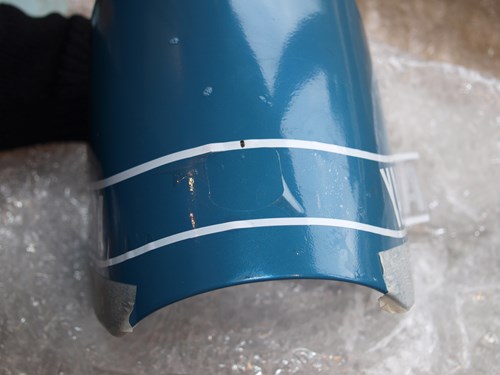
I carefully and gently move the decal until I am happy with its approximate position. With the centre and one side in place I can then move onto the other side of the panel and ensure that everything is approximately in place as it should be.
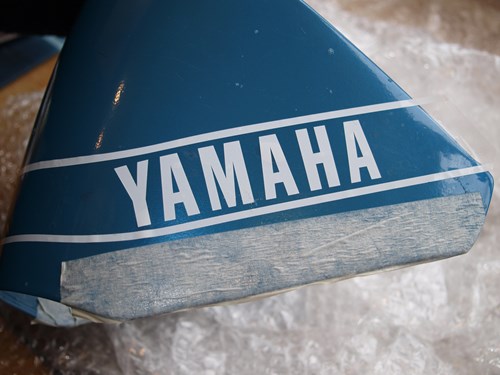
Once I’m happy that with the overall appearance I can then begin to fix the decal permanently in its final home. Making sure that the reverse side of the panel is not being squashed and the decal attached to it is not being wrinkled, stretched or twisted I can carefully press the decal onto the painted surface. I prefer to use kitchen towel or clean rag; some people use a piece of wiper blade or a thumb.
The aim here is to gently squeeze the soapy water out from under the vinyl and allow the adhesive to make intimate contact with the panel. Working from the mid point of the decal outwards air bubbles and the bulk of the soapy water are systematically squeegeed out from under the vinyl. On this particular decal I run a series of sweeps left and right at 45 degrees to the longest edge and get the air and water out by the shortest route rather than chase them to the end of the decal. When the majority of the water has been removed I make a few more passed with a dry paper towel to mop up as much water as possible.
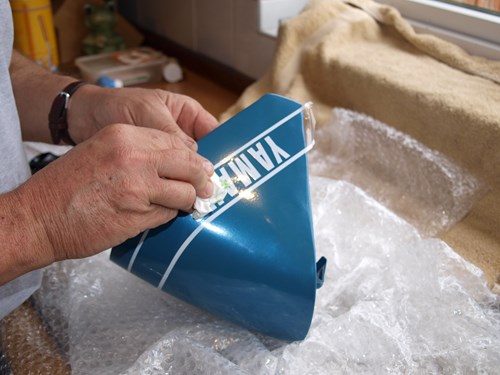
It’s possible to get too enthusiastic and stretch the vinyl, so care and patience rather than brute force and heavy pressure should be used as the balance of the water is excluded. Notice I’ve left the over lap at the end hanging in the breeze. Ideally the decal will have been positioned correctly before I started squeegeeing away the water but sometimes minor movement occurs; now is the time to address any final concerns.
Inevitably there will be a microscopic layer of water under the vinyl and this will allow the decal to be lifted and/or adjusted. If necessary carefully peel the decal off the panel and add some more soapy water, reposition and then carry on squeegeeing. Assuming the positioning is OK now is a good time to walk away and allow the remaining water to find its own way out.
I tend to leave panels by a window for 12-24 hours before handling them again; the combination of gentle heat and air currents removes the last of the water and if I’ve done a decent job there will be no trapped air or water. The overlap that I left unattached can now be turned around and stuck on the back of the panel. Decal vinyl is happiest lying flat, try and bend it around a sharp edge when it’s wet and it’ll consistently spring up; furthermore persistent handling if likely to degrade the tack of the adhesive. Allowed to dry unmolested the dangly bits can be easily stuck down when dry.
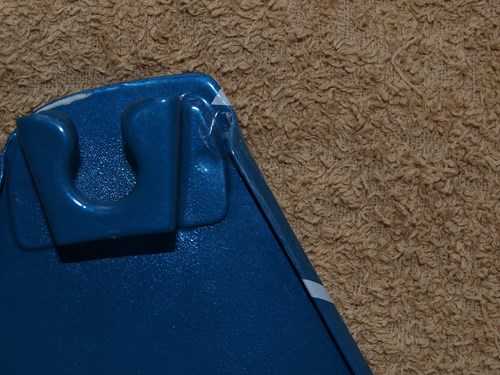
If you do subsequently find the odd air bubble you may be able to redeem the situation with a very fine sharp needle. Lancing the air bubble and carefully manipulating the vinyl will probably address most situations. Avoid using large needles or pins as these generally have a relatively large dull tip and their entry point can remain visible.
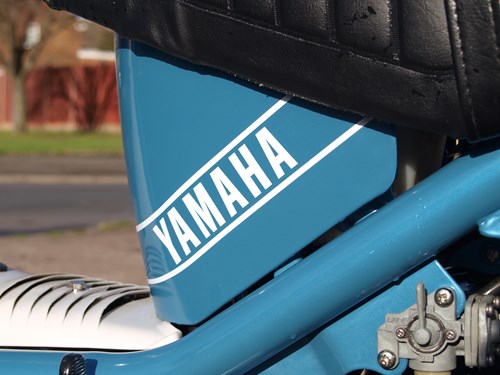
So there it is finished, the panel has been polished, soaked in a cloud burst, washed with a proprietary bike cleaner and re-polished yet it’s still firmly in place. With a bit of planning and thought, decal application can be straightforward. So another black art has been transformed into a practical skill and another tool for future motorcycle restorations at hand.
For more technical advice, visit Motorcycle Workshop Guides: The Complete List.
To find out more about a classic bike policy from Footman James and to get to an instant quote online, visit our Classic Bike Insurance page.
The information contained in this blog post is based on sources that we believe are reliable and should be understood as general information only. It is not intended to be taken as advice with respect to any specific or individual situation and cannot be relied upon as such.

COMMENT